– Welcome everyone to Wednesday Nite @ the Lab. I’m Tom Zinnen. I work here at the UW-Madison Biotechnology Center. I also work for the Division of Extension Wisconsin 4-H. And on behalf of those folks and our other co-organizers, PBS Wisconsin, the Wisconsin Alumni Association, and the UW-Madison Science Alliance, thanks again for coming to Wednesday Nite @ the Lab. We do this every Wednesday night, 50 times a year. Tonight, it’s my pleasure to welcome back to Wednesday Nite @ the Lab, but for the first time in real person, Professor Nam C. Kim. He’s in the Department of Anthropology here. He’s gonna be speaking to us about exploring the legendary foundations of ancient Vietnam. He was born in Saigon, now known as Ho Chi Minh City, and went to high school in Lincoln Park High School in Chicago. He then went to the University of Pennsylvania for his undergraduate in international relations. He went to New York University to study political science for his master’s, and then went to the University of Illinois Chicago to get his PhD in anthropology. He came here to be on the faculty at UW-Madison in 2010. I’m looking forward to his talk. It’s a great combination of history and culture and archaeology and all kinds of cool stuff. Would you please join me in welcoming Nam C. Kim back to Wednesday Nite @ the Lab? [audience applauding]
– Thank you very much, Tom. It is a pleasure to be here in person. I know the last time we tried to do this, I was in my living room, and we had the talk during the height of the pandemic. But it’s a privilege to be here, and I want to thank Tina as well from PBS Wisconsin for this opportunity. So for this lecture, I’m gonna be your tour guide to take a look at a time and place in Vietnam that goes back a couple thousand years. So we’re gonna be looking at what a lot of people talk about as the sort of foundations and the underpinnings of an emerging Viet identity and civilization. And as backdrop, I just wanna start to situate ourselves chronologically. So if we look at some areas that are probably more familiar to many of us, looking at the Mediterranean, for instance. So just about 2,000 years or ago, or a little bit before that, we’re looking at the beginnings of the Roman imperial period. And for the Roman Empire, wherever they spread out outside of Rome, since some of these areas, they viewed the outside communities, the borderlands, as inhabited by what they would consider barbarians in need of civilizing. [audience member chuckles] So along the fringes of the Roman world, we can talk about the Gauls, the Celts, and other communities within this Mediterranean region as those unwashed that needed to be civilized. And I want you to hold onto that thought because there’s a similar theme.
If we go right around the same time period, maybe a little bit before, across that Eurasian land mass out to the east, into areas of East Asia to an area that would become modern-day China, if you look at this screen, you can see that little red shade in the middle. That little circle there is what’s known as the Central Plains of China. And here, right around the mid-part of the first millennium BCE, we have what’s known as the Warring States period. And I’m sure many of you are familiar with this time period and this history. This is right around the time that we have Sun Tzu writing about the art of war. We have various kingdoms in the Central Plains and outside of it competing, vying for power and control over this territory of the Central Plains and beyond it. Now, during this time period, we see the end, a kind of culmination of conflict with the Qin, one of those competing kingdoms, the Qin taking over. All right, so this is right around the time that many different kingdoms have been building their own infrastructure. A lot of the parts of the, what would eventually become the Great Wall of China are originally constructed by different societies at this time in piecemeal fashion, not necessarily related to one another. And I’m sure many of you are familiar with the Qin because the Qin emperor, this kicks off the imperial dynasty, imperial period of Chinese history. When that emperor dies, he has his remains placed into this massive tomb that is made famous by the discovery of the terra-cotta soldiers.
So this is right at that time period of around 221 BCE where we have the culmination, the start of this imperial history. And after his death, within a couple of decades, the Qin dynasty is replaced by what’s known as the Han dynasty. And this is the backdrop for our story today ’cause when we think about the connections between the area of northern Vietnam, what would become northern Vietnam in the modern day, there is a very complicated relationship between the Han people and the people just to the south. Because the Han empire, as it comes into power, begins to expand its reach beyond the kind of reach that the Qin had. And they start to encounter what they consider to be the barbarians of their fringes. So we have expansion into the west, into parts of what would become Mongolia, into the Korean Peninsula, and down into what’s known as the Red River Valley area. And in this kind expansion, we have people that are encountering these other communities that are writers, colonialists, who talk about the barbarians in these fringe areas who are in need of being civilized. So we have the expansion of the Han empire and dynasty. And I just wanna highlight a couple of places in particular. So you can see in the yellow shaded areas, in the northeast, we have the Korean Peninsula, and then in the south, that is what would eventually become northern Vietnam. And this is what’s known as the Red River Delta and Valley area. So those are two of the kind of barbarian hotspots that we can point to for the Han.
Now, if you’ll indulge me for just a second, Tom mentioned that I was born in Saigon, so I have mixed ancestry, and some would say I have mixed barbarian ancestry because my father is Korean, as you might have guessed from my last name, and my mother is Vietnamese. They met in Vietnam in the 1960s, in 1967, eventually fell in love, got married, and I was born in 1974. So for those of you that are familiar with the history of Vietnam, the modern history, you know that this is right around the time that the war starts coming to an end. And within a year of my birth, April 29, 1975, we see the fall, not just of Saigon, but the entire state of South Vietnam, right? This is the history that we have. And it was that day, April 29, right before April 30, which was the actual day that Saigon is toppled, my parents and I, and I don’t remember any of this; I was an infant at the time, but we evacuated out of Saigon from the USAID rooftop by helicopter. This is part of what’s known as Operation Frequent Wind. And you can see on the screen here, that’s an image on the top right not of our evacuation. This is another famous photograph taken by Hubert van Es of a similar kind of evacuation that was occurring on the same day. But that was the method that we escaped as refugees.
That picture, the larger picture, that is me with my mother after we had evacuated, gotten out to the coast, and eventually from the coast out to sea to various refugeem camps across the Pacific before ending up in the United States. We were part of what’s known as Operation New Life. And this was based in Guam. And we were processed as refugees through that area, and then eventually ending up in the United States. I tell this story because, for me, there are two main reasons to relate this. One is it’s a privilege to be able to go back now, having had the upbringing that I’ve had, having had the opportunities that I’ve had, to go back and work on Vietnamese history. This is something that my parents never dreamed would be possible, having left the country under those circumstances. The other reason I tell this story is because my mother’s family hails from the northern part of the country originally. So if you look at this photograph, this is all the members of her family in the 1950s up in the Ninh Binh province. And this is my mother right here. She’s about six or seven years old at the time. But on that side of the family, what we’re gonna be talking about today, this journey that we’re gonna be exploring, all of this was communicated as history, as fact. It’s taught in school books, it’s in textbooks, it’s taught to schoolchildren. That was the case decades ago. It still is the case today.
And this takes us to the next part of the lecture, the story of early Vietnam. What I wanna emphasize here is there is a very interesting connection, as we talked about at the beginning, between an emerging Chinese or Sinitic civilization, and an emerging Viet one. This is a very long and complicated history. It goes back millennia, and it still persists to this very day. So if we think about this idea of annexation or colonization by the north and this view of barbarians to the south, the Vietnamese people, many in Vietnam today, view this very complicated relationship as one defined by resistance to Chinese cultural domination or dominance. This goes back to the Han Empire 2,000-plus years ago. And once the Chinese came, once the Han Empire annexes this part of the Red River Valley and Delta that we’ll be talking about, they would stay, their presence would stay for about 1,000 years before there is independence regained right around the end of the first millennium of the Common Era. There was a very recent piece, op-ed, written in The New York Times by sociologist Tuong Lai. And I’ll just paraphrase, but he basically argues that the Vietnamese have been fighting for millennia to maintain independence, to maintain their culture in the shadow of this giant neighbor to the north. To me, this is very interesting to think about when we compare the uses of history and the material record for various purposes. This is particularly acute in many places around the world, especially in areas where we have turmoil, self-determination, and history that can be tied to national identity.
So if we think about 20th century history in Vietnam, with all of the conflicts, with resistance against the French, with resistance against the Japanese, and then conflicts in the civil war, this is particularly poignant. This is a tapestry that shows legendary descriptions about the founding communities or dynasties of the Viet civilization. This is what’s known as the Van Lang kingdom. This purportedly exists for thousands of years. The reason that I think this is interesting to think about is because that tapestry hangs today inside what’s known as the Reunification Palace. This was formerly the South Vietnamese presidential offices, now labeled, relabeled, as Independence or Reunification Palace. Those kings of the Van Lang kingdom were talked about. They were brought up in speeches by people like Ho Chi Minh who talked about the prehistoric or legendary eras of the Viet people, and said basically, this is in Ba Dinh Square in 1945 when he declares independence against the Japanese. And he says, “These folks are part of our ancestry. They’re in the past. We are the descendants of those legendary kings.” So there’s a very interesting connection between the legendary past and present-day political identity. To geographically orient ourselves, we’re talking about this part of what is Vietnam today.
This is the Red River Valley and Delta. It’s considered to be the crucible of an emerging Viet identity a couple thousand years ago. And when we think about reconstructions of this history, we’re talking about a mix of oral traditions, folk tales, historical text, and increasingly, archaeology. There are legendary kingdoms like the one I just described, as well as what’s known as the Au Lac kingdom. And this is increasingly part of a tapestry of research that includes archaeology. So we have what’s known as the Dong Son culture and a site known as Co Loa, and I’ll talk about both here today. We’ll start with what’s known as the Dong Son culture. The Dong Son culture’s renowned for various kinds of cultural practices that date to just over 2,000 years ago, the mid first millennium BCE. One of those practices has to do with the uses of boats for burials. And within these burials, we have high-status, elite individuals with lots of materials, very valuable prestige items, oftentimes made out of bronze.
So we have different kinds of vessels, utilitarian tools, weapons, and so forth. The Dong Son culture was spread out all over northern Vietnam. To date, there have been maybe over 100 different sites that have been identified, workshops, settlements, as well as burials and cemeteries.
We know that they were farming rice intensively. We know that they were very sophisticated in their bronze industries. We have evidence of social ranking between individuals within communities based on the kinds of burials that we can make out, the mortuary data. We have evidence that some of the homes were probably built on stilts above the floodplains. And this is not surprising, given the intensive kinds of rice production that we see in this region. And of course, we have those very famous bronzes. And we have images of boats depicting different ways of life. Some of these boats have warriors standing on them with plumed, feathered headdresses. So we have this very interesting set of cultural practices. The material remains, as I mentioned, include sophisticated bronzes like these, ritual vessels, utensils, weaponry. And perhaps the most famous of the bronzes associated with the Dong Son is what’s known as the bronze drum. There are various specimens that have been found all throughout northern Vietnam, even parts of southwestern China. These bronze drums are very big in size, since some of them are probably about this tall in height, maybe about 100 to 150 pounds in weight. And the most famous, one of the most famous of these specimens is this one on the bottom right. This was found at the site of Co Loa, which I’m gonna talk about in just a second. That particular one was about 158 pounds. And the estimate is anywhere from 1,000 to 7,000 kilograms of crude ore material, copper, tin, and other materials that would’ve been necessary to produce this one specimen.
So we have very sophisticated forms of bronze working kind of at their peak in this region at this time. And if you look at the iconography on some of these bronzes, particularly the bronze drum, what you can make out on the tympanum, for instance, or on some of the bands around the sides are images showing us potential lifeways, cultural practices of the Dong Son people at this time. And if you can look very closely, you might be able to make out. . . Here, I can show you: motifs of cranes, for instance. And if you go to Vietnam, I don’t know if anybody’s been to the city of Thanh Hoa, this is in the northern part of Vietnam. I was there recently, and as we approached the city along the highway, we were confronted with this along the highway, this massive monument. And if you look, you can see there’s a replica of a bronze drum right in the center here at the foot. And then the motif of the cranes, right? So it shows how there is this very clear connection between the material record and ideas about the past that might be considered glorious and modern-day identity. That sort of motif, that set of motifs is seen not just in monumental architecture in cities, but if you look at postcards, if you look at textbooks, if you look at packaging on tea, for instance, you see the same kinds of motifs. Here we have the tympanum of one of those bronze drums on the top of this tea box. This should not be surprising given the history, right? All of that complicated history with the Chinese that we see the Han Empire coming in and annexing this region and the Chinese staying for about 1,000 years. For many people in Vietnam, once independence was regained, there was a very concerted effort to search for the pre-colonial past, our ancestors before the Chinese came. That was the mission. So the Dong Son culture figures very prominently in this story because it is the last pre-historic culture that existed in this region before the Han annexation period. The Han come at an ascribed date of 111 BCE. And we know that the Dong Son materials are spread out all throughout this area for several centuries before the Han arrive. That’s one part of the archeological backdrop.
The second piece that I’d like to talk about, it’s what’s known as the Co Loa site. So here we have another image showing us the Red River. You can see the river from its source point up in the southwestern part of modern-day China. This is the Yunnan province, that’s Yunnan Plateau. We have the river coming down about 1,200 kilometers through the mountains before emptying out into the Gulf of Bac Bo, also known as the Gulf of Tonkin. This is the delta here, right by the coast. And the site that I want to talk about, known as Co Loa, is located right in that delta. In fact, it’s located right across the river itself from the modern-day city of Hanoi. I love this image because to me, it encapsulates a couple of things, right? We can think about how this area is very important in the national psyche and imagination for the Vietnamese people. We have the city of Hanoi. We also have what’s known as the Thang Long or Hanoi Citadel. That was the capital of Vietnam centuries ago, and the better part of the second millennium. And then we can go further back in time.
So this is a game I like to play with my students. I don’t know if you’ll be able to see it, but can anybody spot the archaeological site? You don’t have to answer the question, but let your eyes wander. If you look up here to the north, that is the site of Co Loa located across the river. This is about 17 kilometers away from the outskirts of downtown Hanoi. And again, for me, this image is powerful when we think about how this particular geographic space has functioned as the kind of locus of political and cultural significance for Viet culture and society going back over 2,000 years. To give you another image, I’m sure you recognize this one, right? [audience member chuckles] We are located right there. You can see the Biotechnology Center. We’re sitting in the auditorium. Just to the southwest, you’ve got in the yellow shaded area, that’s Camp Randall. I have that here. We’ll come back to Camp Randall in just a second. But I wanted to give you a sense of scale. So when we think about the Co Loa site, along the same kinds of scale of size, this is the site itself juxtaposed against where we are currently in Madison. I have a few more illustrations to give you an idea. This is Central Park in New York City, Manhattan, and then the Co Loa site along the same scale. We can go elsewhere to other parts of the world. We can go to the Nile and Egypt. We can see the Great Pyramid and Co Loa juxtaposed against that.
I don’t know if anybody’s been to Cambodia and to Angkor, the very famous site of Angkor Wat, this massive temple and city in Cambodia. This is Angkor Wat and we have the Co Loa site. If we go back to what I mentioned earlier, Randall, Camp Randall, the site of Co Loa is about 600 hectares in size, give or take, about 450 hectares enclosed by the outermost extent wall. This is roughly about 1,100 football fields in size. If we think about that, how many people have heard of this site before this lecture? This is one of the largest settlements found in the prehistoric record of southeast Asia. Many people do not know about this site for various reasons, but when we think about mainland southeast Asia, a lot of people do know about places like Angkor or Angkor Wat, and yet we have a site like this that predates some of those massive settlements.
To give you an idea, we’re looking at the extant– This is a satellite photo showing the extant ramparts associated with Co Loa. Here we have the innermost wall, which is roughly rectangular in shape. This is about 1. 65 kilometers in its perimeter, and it’s punctuated by a series of bastions. Next, we have the Middle Wall. This is about 6. 5 kilometers around in its perimeter in this sort of irregular shape. And then we have the outermost wall. This is about eight kilometers around its perimeter. And the estimate is we’re looking at anywhere between one to two million cubic meters of earthen soil materials that were moved in the construction of these ramparts. These are earthen rampart enclosures that were constructed that are associated with this particular settlement. If you look, you can see, if you go there today, some of these walls still stand, invarious states of disrepair, up to ten meters in height in some places. They are flanked on the exterior by moats or ditches. And the ditches potentially connected to the river system that eventually connected to the Red River itself. That might have operated as a modern, or as a kind of thoroughfare of connection. And if you look at modern habitation at the site, you can notice right there in the middle, in that central area how densely habitated it is today by modern communities, which makes exploration and investigation a little bit challenging because we can’t dig everywhere, we can’t explore all of the areas of the site, particularly in those central areas that may have very interesting materials for us. So, and I’ll come back to that in just a minute, it makes the efforts to test various hypotheses very complex and challenging.
But one of the big debates that has been going on for quite some time is why do we see this here at this time and in this place? Who might have been responsible for the emergence of this massive settlement? And there are various theories about this. [audience member chuckles] I can guess that you’ve recognized this image if you’re chuckling because we are looking at Monty Python and the Holy Grail. This is an image of King Arthur, one of my favorite depictions of King Arthur. I have this here not because there is any connection. I’m not hypothesizing, nor have I heard any hypotheses linking King Arthur to northern Vietnam in the Iron Age. However, why I think this is interesting to think about as a sort of analogy is because some of the legendary descriptions of King Arthur. We have the Lady of the Lake, for instance, offering Excalibur to the king, functioning as a source of power of, emblematic of authority, for instance. With Vietnam and the site of Co Loa, we have similar kinds of stories, legends. There is this tale of a magic turtle coming out of the water talking to the very first king of what’s known as the Au Lac kingdom, giving the king advice about building his kingdom. He overthrew the previous dynasty, he sets up his capital city at the Co Loa area. The magic turtle gives him advice about how to construct his fortifications and defenses as he sets up his seat of power. Beyond that, the story says that the turtle also gives the king one of its claws and says, “You use this as the magic trigger mechanism for your crossbow. That will allow you to vanquish all of your enemies.” We’ll come back to that. I don’t know if anybody knows where we are. We’re not in Vietnam. This is a different part of the world. We are in the UK. This is southwest England in the Cornish coast. This is a site known as Tintagel Castle, which many researchers suspect might be associated with some of the historical records that are connected to King Arthur, potentially to King Arthur. So we have recent excavations at this particular location talking about our Arthurian tales and legends. I have this here, again, as analogy because for us and for our story today, what’s known as Camelot is very much the equivalent to the site of Co Loa for the Vietnamese. It is their version of this capital city that functioned as the beginnings of the various dynasties leading to the modern day.
We have two sources, main sources of information when we reconstruct that history of Co Loa. The first has to do with Vietnamese texts and traditions. There are various textural accounts that were recorded from 13th, 12th century onward in the medieval period of Vietnamese history. And as I mentioned before, many of my relatives and many people in Vietnam have grown up reading about this history as conventional wisdom, as conventional history. They talk about the occurrence of what’s known as the Au Lac kingdom at an ascribed date of 258 BCE, with the founding king known as An Duong Vuong coming to power using Co Loa as the capital and taking advice from the magic turtle, building a series of earthen enclosures to protect that seat of power. The legends say that there were nine walls, not three, not the three that we see today, but that there were actually nine walls built in a kind of spiral-shaped in concentric circles, reminiscent of a snail shell’s design. Now, we have this one source of information, but we can also talk about some issues that we might take with that source of information. Many of these tales were recorded, not officially recorded into text until later. They were probably oral traditions and folk tales passed on through generations, but formally recorded after independence from the Chinese, so maybe well after. They discuss supernatural events, they discuss things like the magic turtle and so forth. So we have these potential challenges associated with these tales. Maybe there’s an element of bias because of independence and a kind of search for this distant past. We also have supernatural details recorded as well. So we have issues that we can raise with that source of information.
The other source of information that we have is Sinitic texts. So after the Chinese come, we know that they record what they encounter, the people that they encounter. And for them, these were the barbarians to the south who needed to be civilized, who lacked elements of sophisticated farming practices, of governance, of bronze working and so forth. And of course, we might take all of these depictions and these viewpoints with a grain of salt as well. Perhaps there is some element of imperial bias. But the upshot is that we’ve got these two conflicting depictions of what indigenous life here might have looked like, of what cultural life looked like before the onset of the Han. And if you put that into a kind of nutshell, the debate might be, is quote unquote civilization brought here, imposed by an outside entity, namely the Han, or is it indigenous, is it local? So we can point to a couple of different general models to explain this emergence of this particular city and this civilization. And what I would argue, what many of my colleagues argue is that without the archeological record, without that material data as a kind of arbiter, it’d be very difficult to answer some of these questions. The big one, of course, is when does the city date to? Was it a byproduct of the arrival of the Han, or does it predate all of that? This takes us to the next part of the lecture, which is our archaeological field work. Now, a few decades ago, an historian by the name of Steve O’Harrow at University of Hawaii published this paper in a journal called Asian Perspectives. And in this particular paper, he talks about what the Chinese records claim and what we know from historical documents with the Vietnamese. And he laments that there is not enough archaeological material for us to address these questions. And I’ll just pull out a couple of quotes from this. And he says, “Sometimes an old poem can tell you where to dig. And the one question of importance that can be addressed at the present moment would be to obtain reliable dating, materials and dating for the Co Loa site.”
And this is what my colleagues and I have tried to do for the past 15 years or so. We’ve been conducting a systematic set of investigations and examining the rampart walls. We use the walls, the ramparts, as a proxy measure for the city itself simply because we don’t have access to the entire corpus of the material record for the city. As I mentioned before, we have a lot of habitation, modern habitation in different parts of the areas, so we can’t access all of that material. But we have endeavored to use the walls then as a proxy.
When were the walls constructed? By whom? Using what kinds of methods? And what can that tell us about the monumentality of this site? And perhaps that can be connected to the city itself.
So I’ll just briefly go through our data and some of our highlights. We excavated, over the course of three different field seasons, portions of the Inner Wall, Outer Wall, and Middle Wall, all three of the visible enclosures. And to generalize, we could determine that we have three main chronological periods, which we’ll generally label as Early, Middle, and Late. And within these periods we have specific phases of construction. Using the materials from the excavations, the profiles, looking at construction methods, using artifacts and organic materials recovered, we could determine that our main period of interest is this Middle period, Phases Two, Three, and Four. And we have absolute dates and relative dates based on our recovered data. And I’ll talk a little bit about that in just a second. I first wanna start with Phase One. I mentioned the Dong Son culture earlier in the talk. That material has been found all over northern Vietnam, a hundred different sites, right? We find Dong Son pottery here as well, stratified at the lowest levels. Underneath the rampart construction, we have evidence of Dong Son pottery. It shows that the Dong Son people were definitely in this area. What’s interesting though is that these features and the materials don’t seem to have a direct relationship to the rampart. It predates by a couple of centuries, and it has no clear structural relationship to what would follow. But what’s interesting is with the pottery that we find, we have radiocarbon dates spanning of period of about 500 to 300 BCE. Built on top of that, we have monumental construction, layers of earthen materials deposited to build up this rampart feature. Here we have Phases Two, Three, and Four. This is what we would constitute as the Middle period. And you can see with Phase Two, we have dumped earth, piled earth, clumps of soil and clay piled up into this rampart feature.
And then we have very clear layers of rammed earth, stamped earth into Phase Four. And this is where we find the bulk of our artifacts, in Phase 4. Roof tiles, and I’ll talk about that in just a second. But the materials show us that that middle period spans a time period of 300 to 100 BCE, which is significant when we think about the ascribed date that the Chinese say that they arrived, 111 BCE. I’ll return to that point in a little bit. In Phase Four, we find the bulk of our artifacts for this ancient construction. Above that, we have refurbishment periods of the later historical periods, these episodes of reconstruction. But that Middle period seems to be what’s associated with the ancient rampart construction. And at the top of that, on the surface of that ancient wall, we have fragments of roof tiles; in fact, thousands of fragments of roof tiles. They’re all over the site, wasn’t just in certain excavations, but if you cut through any part of the ramparts where they’ve put roads through, where the walls are eroding, you see the same stratigraphic layer of roof tiles.
There are different ideas about why they’re here. Maybe they were part of a roof-like structure that was sitting on top of the ancient wall. Maybe it’s debris that was placed here to help shore up against erosion or monsoonal rains. That’s still ongoing in terms of debate. But what we do know is that the materials found with the roof tiles suggest that that construction, their presence dates to this time period of 300 to 100 BCE. What’s also interesting about the roof tiles is we don’t find them anywhere else in northern Vietnam, not at this time. There is only one place, one site where we have roof tiles, and that’s right here at Co Loa. There are no roof tiles in northern Vietnam until centuries later. The suggestion is that perhaps the use of the tiles is very significant, that maybe there is something significant about this space, this one settlement. The other thing that people have found is inside the Inner Wall area, there are certain places where excavations could happen that are open.
And my colleagues at the Institute of Archaeology in Vietnam, the national archaeology arm, conducted some investigations in that Inner Wall area, and they uncovered casting areas that have yielded evidence of sophisticated bronze working on a massive scale. So we have the molds for crossbow bolts made out of bronze. We have the trigger mechanisms made out of bronze as well for crossbows. The very famous bronze drum that was found at Co Loa was found in this vicinity as well. And this all speaks to something for us. If we put the materials together, it suggests that perhaps whoever was here and had control over this particular settlement likely had control over these methods of construction and manufacture as well. That the bronze working that we see, especially with weapons, might have been monopolized in some way by the centralized authority. Our subsequent excavations in various parts of the walls all show the same kinds of roof tiles as well as the same chronologies and construction methods, which suggests to us that we have probably one centralized authority responsible for the planning, the conception, and the direction of this monumental architecture, this project that probably involved lots and lots of population and labor. We have various estimates about how many hours it would’ve required, how many man hours and so forth, how much labor. But we are probably looking at thousands of people, depending on how much time we’re looking at.
So we put all this material together and we start thinking about the implications then. This is a statute that stands at the Co Loa site today. And you can see the individual here, this is not the king, but it’s someone else who may be the military advisor to the king. This is a commemoration of that person, holding a crossbow. And I wanna come back to that in just a second. But if we think about the idea of early Vietnam, I’m asked often, what does this mean for those particular legends, the Au Lac kingdom, that famous An Duong Vuong king and so forth? What I would say is we have tantalizing clues. We have evidence of monumentality, we have evidence of something powerful that’s here before the Han come. So potentially some of those folk tales about this kingdom may be valid, or at least parts of those stories may be valid. We have clear evidence, but we don’t have definitive proof that the king, that individual actually existed or that kingdom existed. We don’t have a tomb, for instance, of that king. We don’t have anything in writing that would show conclusively that the king existed. So for me, I’m not quite willing to go out on that particular limb.
What I am willing to say, however, is that, given the material record that we have, all that evidence of monopolies, over production, large labor pools, the monopolization of resources on this massive scale for this huge city that was completely unprecedented for the region at the time, I’m comfortable to say that we have something that might be an ancient state, a kingdom if you like, that existed in this time period of 300-100 BCE. It predates the solidification of the Han Empire’s control and annexation of this region. So from that standpoint, we are looking at something that is local and potentially indigenous that’s separate from that later history. Now, whether or not this is definitive proof, whether or not this is related to modern-day Vietnam, that’s debatable. We’re looking at changes through time, through a long stretch of time, but I’ll come back to that in a little bit. If you go back to the idea of barbarians and this notion that the Chinese were civilizing the barbarians to the south, perhaps we can put that argument to bed and say, “Well, it depends on one’s definition, of course.” But what we see here is complex. It is politically complex, culturally complex.
We have evidence of urbanism, we have evidence of early forms of ancient statehood, intensified kinds of rice farming, highly-developed bronze working, and so forth. Now, does this mean that it was indigenous only and not foreign-imposed as a kind of complexity? I don’t think so. My impression from looking at all the evidence is that we have clear connections within the region. It’s probably a combination of factors. If we consider, for instance, where the Red River Delta is located at the terminus of this Red River, we have connections up and down the Red River that might have functioned as a very important highway connecting various communities through parts of what is today southern China, southwestern China, as well as northern Vietnam. We have access to the coast. Probably, this is a very strategic hub of interaction, lots of materials, lots of people and ideas coming in and out, exchanged throughout this period. The other thing to keep in mind as well is, this happens right around the tail end of the Warring States period. And if we contemplate all of the push factors associated with conflict, it is conceivable that, as the Warring States period is occurring, there are families, communities that are moving, displaced. Just like my family was displaced in the 20th century, we can imagine 2,000 years ago, ideas and people being moved around as well. And so, we have a combination of factors and interaction.
I’d like to talk a little bit about some of the work that we’re still doing. So my colleagues and I have been continuing our research, not just with the systematic investigation of the rampart features, but of other kinds of investigations. One of my colleagues, Dr. Russ Quick, and I have been embarking on remote sensing and geophysical surveys around the site of Co Loa. And we’ve been using magnetometry, for instance, to do geophysical investigations in select sites. This started a few years back, and we have hit just a small percentage of the available area. We need an army of people. So if anybody’s interested, let me know. We can probably take volunteers out to Vietnam. But it’s just a small team of us right now. But I wanna share a couple of highlights of some of the geophysical methods that we’ve done. This is one area known as Location 12. As you can see, it’s a rice paddy. So we have access to certain farm areas. We’re walking through these fields with the magnetometer. And if you look at the results, this is an image showing us potential anomalies just below the surface that get picked up. And if you look here, there are these anomalies that were of interest, so we went and did ground truthing, test excavations in those areas to see what might be showing up. We don’t know how deep or what materials might be there or what they date to, but we know that something is interesting under the ground, these targets.
And in excavating, what we found were burials. These are burials that date to what’s known as the Le Dynasty. This is very recent, comparatively speaking. This is 18th century. But in that particular burial, the human remains did not survive because of the acidity of the soils, but some of the burial items, the goods did survive. So we have access to those materials, and we know that they date to that Le Dynasty period. But it shows that potentially this method, this is proof of concept, right? This method is very productive and can show us in the future different areas that could be productive to examine and to ground truth. Another thing that we’ve done recently is we’ve obtained LiDAR imagery. I don’t know if anybody’s familiar with LiDAR, so Light Detection and Ranging. This is a technique that has really, really revolutionized our ability to do survey work in archaeology. So this has been done in different parts of the world with very successful results, parts of Mesoamerica, parts of the United States, and parts of southeast Asia.
And we were able to obtain LiDAR data from entities in Vietnam that have been flying their own missions. And if you look at this image, what I would wanna point out is this quadrant to the southwest. If we zoom in on that, what’s interesting here is that the southwest corner of that Inner Wall area seems to be elevated, and potentially, there is another wall located around that southwest quadrant right over here. And if we look at some of the features on the outside, it suggests that perhaps we are looking at additional walling. Those legends talked about nine walls, and people have always said, “Well, we only see three, and maybe there were others, but we don’t see them.” Well, it’s quite possible that we are seeing the remnants. At least we can identify where they may have once stood 2,000-plus years ago through these kinds of methods. And we’re hoping that these legends that talk about this snail shell design and the nine different walls, perhaps we might be able to find and identify areas of interest to test excavate and further test some of these hypotheses, these historical hypotheses as well. So we’re trying to do that. We’re trying to reconstruct some of these ancient environments as well by collecting archaeobotanical samples to see what the landscapes might have looked like. Because the legends say that when the kingdom begins, the king arrives at the head of an army of tens of thousands of people and they clear the forest from this area before they select it as the seat of their capital, right? So this is part of the folk tales and legends. We don’t know if it’s accurate or not, but perhaps if we can reconstruct environments as they change over time and when those changes happen, we might be able to come up with some of these datasets.
And I want to just briefly talk a little bit about what this site and its history means for the Vietnamese people today. This is an image. I believe it was in the first title slide as well. This is an image showing festivals that happen annually at the Co Loa site. It commemorates that legendary history and that king. They’re in honor of these ancient ancestors that are venerated to this very day. So this happens every year at the Co Loa site. And many, many people from all over the country congregate to participate in many of these activities. So just recently I came across this. This is interesting for me, maybe for you as well. I don’t know if anybody’s heard of some of these video games where you have, you can choose characters that you pit against one another called Street Fighter or Mortal Kombat. Maybe you’ve heard of these video games. But in Vietnam, there’s a version of a game like this. And one of the characters you can choose is this person. And if you look closely, you can make out something in his hands. That is a magic crossbow. This is that legendary king used in this video game in popular culture in Vietnam. So we see these legendary stories, these descriptions, these colorful tales that are part of not only textbook and the historical education, but they’re part of popular culture, just like the Dong Son materials and those motifs that I showed earlier. We see them on monuments, we see them on postcards, all over pop culture as well. If you go to Co Loa today, not only will you see the extant ramparts that are still there in disrepair, but you can go visit the museum, the exhibition center. And there are materials on display. There are festivals that happen at the site, as I mentioned. And there are lots of people from all over Vietnam, but all over the world actually that come to visit this site and to visit this history.
This may or may not look familiar. That is the set of walls, and this is the product of schoolchildren. Field trips to the site showing the history of the Viet civilization and people, with schoolchildren being inspired to take clay, maybe we would use Play-Doh here, and reconstruct the walls at Co Loa. Not only do we see that happening as part of the educational process, but we see replicas of the crossbows being handed over to kids to test-fire at targets to celebrate and commemorate this particular historic episode. I mentioned that the Han Empire comes in at 111 BCE. They solidify control, and the Chinese would stay for about 1,000 years. There are different dynasties that come in and out of the picture, but effectively, they retain control for that first millennium of the Common Era. There are different periods, but they’re called the domination periods, right? Brief periods of revolt and uprising, but essentially, the Chinese would stay for about 1,000 years. At the end of that period, right around 1,000, the Vietnamese regained independence in that 10th century. And the first person who comes to power is a king by the name of Ngo Quyen in the 10th century. And what’s interesting about that history is apparently, according to text, Ngo Quyen comes to power, and instead of using the area of Hanoi, where Hanoi is located today, that had been the locus of power when the Chinese were there, instead of using that area as his seat of power, he goes back across the river to the ancient site of Co Loa, and he uses that as the capital. We don’t know exactly why, but we might guess perhaps this is a symbolic gesture, nodding back towards the ancestors, people that he might consider the local, indigenous ancestors of the Viet, this pre-colonial, pre-colonized past.
And this suggests that perhaps that political strategy not only was effective in rallying people, but it also indicates that these stories probably persisted, echoing through the centuries from the time that these communities existed that we see that associated with that ancient city right through to that time period of the 10th century, and arguably right through to the present day. If we contemplate the various rituals and ceremonies that still happen at Co Loa, the ideas that are still propagated, this connection between politics, history, cultural identity, and the management of heritage all intertwined right through to the 20th century when Ho Chi Minh gives that declaration of independence invoking his ancestors from over 2,000 years ago. We can argue that the archeological record then has been mined and continues to be mined as this very rich foundation of cultural material, the cultural past intersecting with the modern-day identity of the Viet people.
Now, I’ve been working at Co Loa for quite some time, and this has been an honor and a privilege to be able to work on this episode of my ancestry. We were also very fortunate to have a lot of interest. So as we were excavating, we had folks coming to the site, other researchers from around Vietnam and outside of it, tourists as well, but also political figures. The deputy prime minister, the former president of the country coming to visit the site as we were excavating to ask us, “What are you finding? What’s coming out of the ground here?” And we might imagine, part of that might be curiosity an intellectual kind of curiosity, but part of it might also be how might this change our view of the past? How might this change our kind of political views about the contrast with the Chinese, for instance? But again, showing us the present-day stakeholders and how everyone has a sort of vested interest in this cultural past.
There is one conservation agency, a preservation agency that is in charge of the site, manages the property, and is seeking UNESCO World Heritage site status for Co Loa. If you go to the website of this conservation agency, the descriptions of the Co Loa site are interesting. They talk very specifically about the king and the kingdom not as conjecture, not as hypothesis, but as fact, historical fact. I’ve been working with my colleagues at this agency for quite some time and they asked me to produce a publication for them on behalf of their agency that describes our findings and our research, our archeological work. And I have this here just to highlight the preface. This is the preface in Vietnamese, but there’s an English translation. And in this translation, what you can make out; maybe not, the font is really small, but I’ll just kind of highlight this. Essentially, we’ve come to this very happy compromise where I might say, the material record, we can push so far to give us ideas about political complexity in this ancient state that existed. Whereas my colleagues in the agency will say, “Well, this is definitive proof. It’s not just archeological evidence for complex civilization. This is proof of the existence of that historical figure.”
Which raises for us this interesting question about who can claim the past, who owns the past, who has the right to generate knowledge about it, to communicate and disseminate that knowledge as well? And I think that if we look at Co Loa as a kind of case study, it highlights the very complex nature of these kinds of topics, debates, and connections. It highlights the very complicated practices of archaeology increasingly. Whether you were talking about Vietnam or United States or elsewhere in the world where there are varied stakeholders and varied voices that might come to the table and have very different interpretations of the material record. We might be looking at the same set of data, the same artifacts, the same sites, the same landscapes. They might mean different things to us though, and how we might interpret them might be varied.
But I think this illustrates the importance of being aware of that so that we bring varied voices to the table. I just want to end with one final slide. I mentioned my barbarian ancestry, and I showed that image of my parents on their wedding day. This is my parents in the modern day. [audience member chuckles] So this is July of 2020. They had retired; we lived in Chicago. I grew up in Chicago. As Tom mentioned, I went to high school in Lincoln Park. But after my folks retired, they moved out of Chicago to Arizona, to right outside the Phoenix area, where they lived for about 20 years or so, right up until a couple years ago when the pandemic started to become an issue for all of us. And we came up with this very complicated strategy to get them out because we were worried about them being on their own in Arizona. So we wanted to move them closer to us and family here, to their grandkids and so forth. So we concocted this very elaborate extraction plan. And when this all happened, it was funny and ironic to my parents. When I finally got them to Madison, they were laughing, and I asked them what was so funny. They said, “Because we’ve totally turned the roles, the tables. We carried you out of turmoil when you were a baby. And here you are now, bringing us out of danger into Madison.” But I’m happy to report that they are doing well, and they have been back to Vietnam, at least on several occasions, and are celebrating some of this history. And they are very, very happy that I’m able to do this work in Vietnam. Even though when we left, the thought was there’d be never any kind of connection back to the country again, okay? And with that, I want to thank you for your patience and your interest. And I’m happy to answer any questions that you might have. Thank you.
[audience applauds]
Search University Place Episodes
Related Stories from PBS Wisconsin's Blog

Donate to sign up. Activate and sign in to Passport. It's that easy to help PBS Wisconsin serve your community through media that educates, inspires, and entertains.
Make your membership gift today
Only for new users: Activate Passport using your code or email address
Already a member?
Look up my account
Need some help? Go to FAQ or visit PBS Passport Help
Need help accessing PBS Wisconsin anywhere?

Online Access | Platform & Device Access | Cable or Satellite Access | Over-The-Air Access
Visit Access Guide
Need help accessing PBS Wisconsin anywhere?

Visit Our
Live TV Access Guide
Online AccessPlatform & Device Access
Cable or Satellite Access
Over-The-Air Access
Visit Access Guide
 Passport
Passport


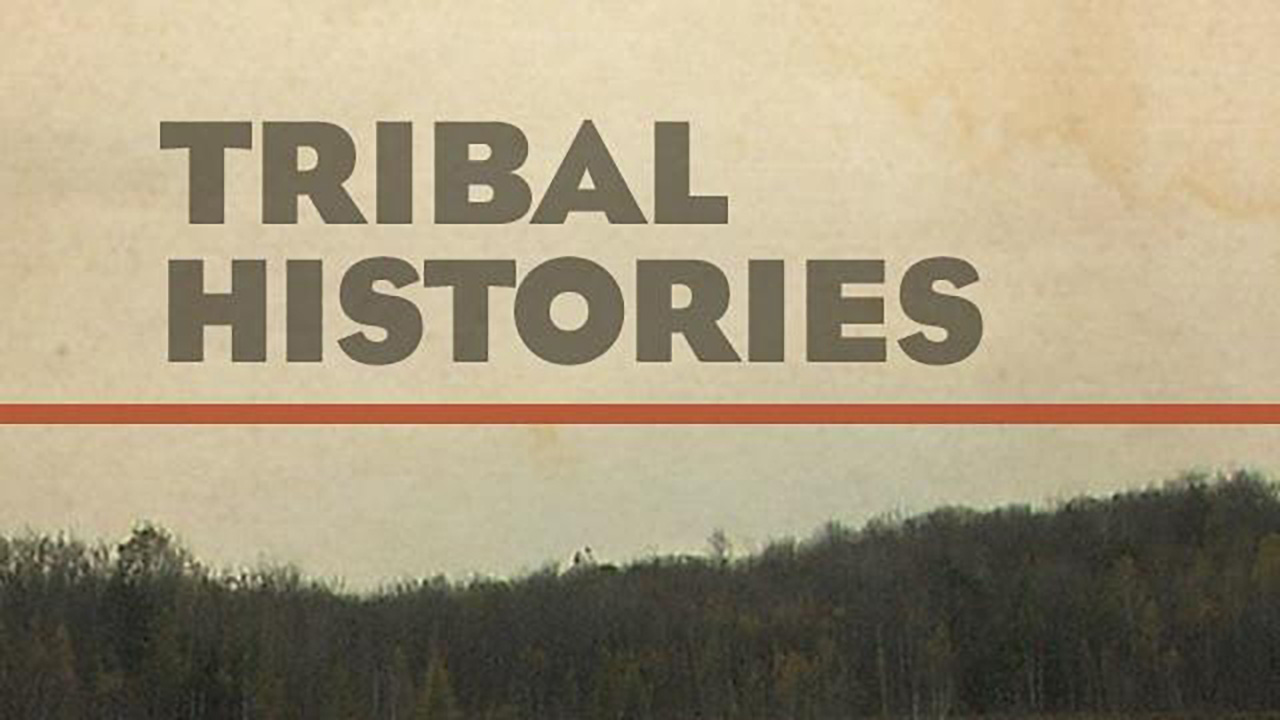




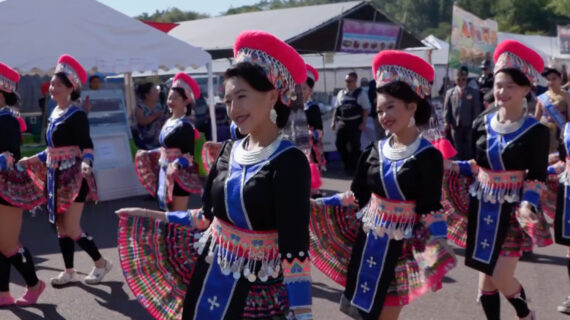

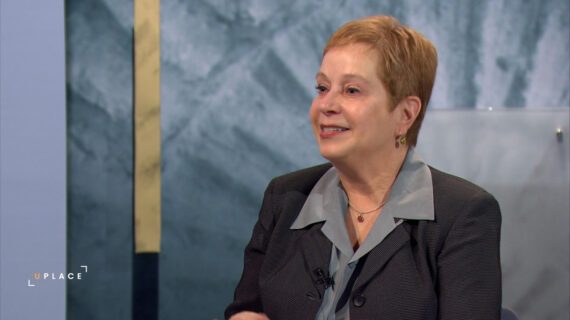
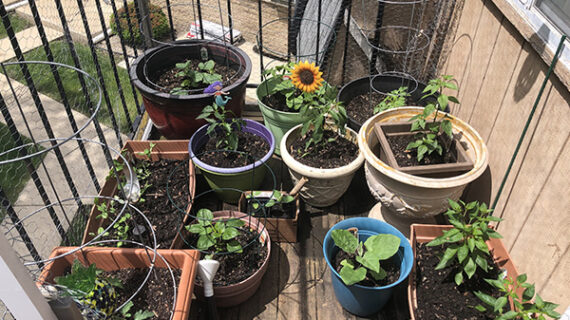
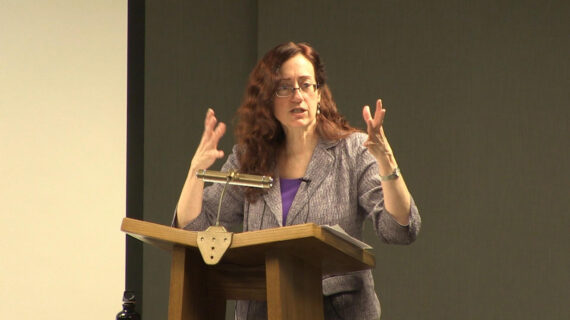
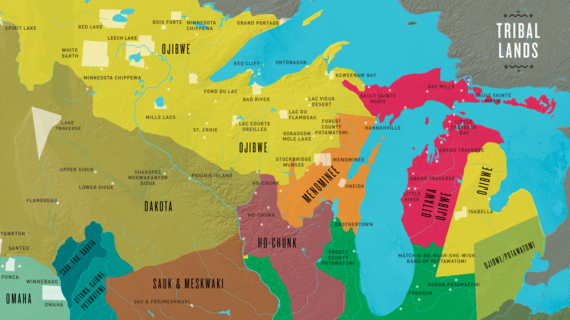
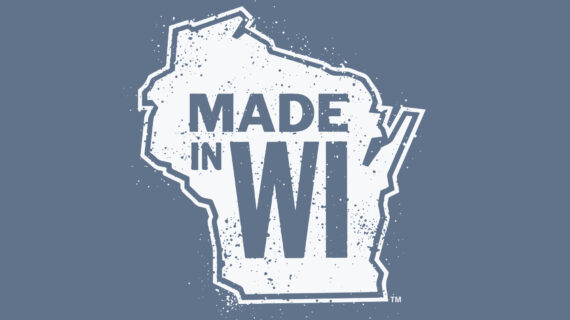

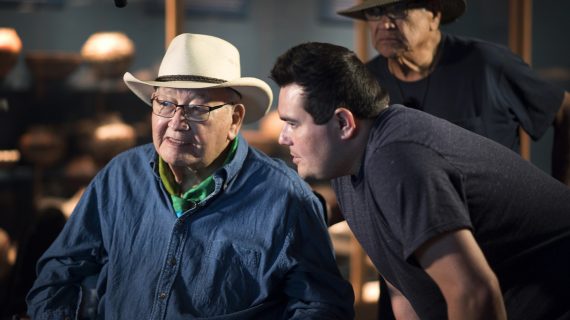


Follow Us